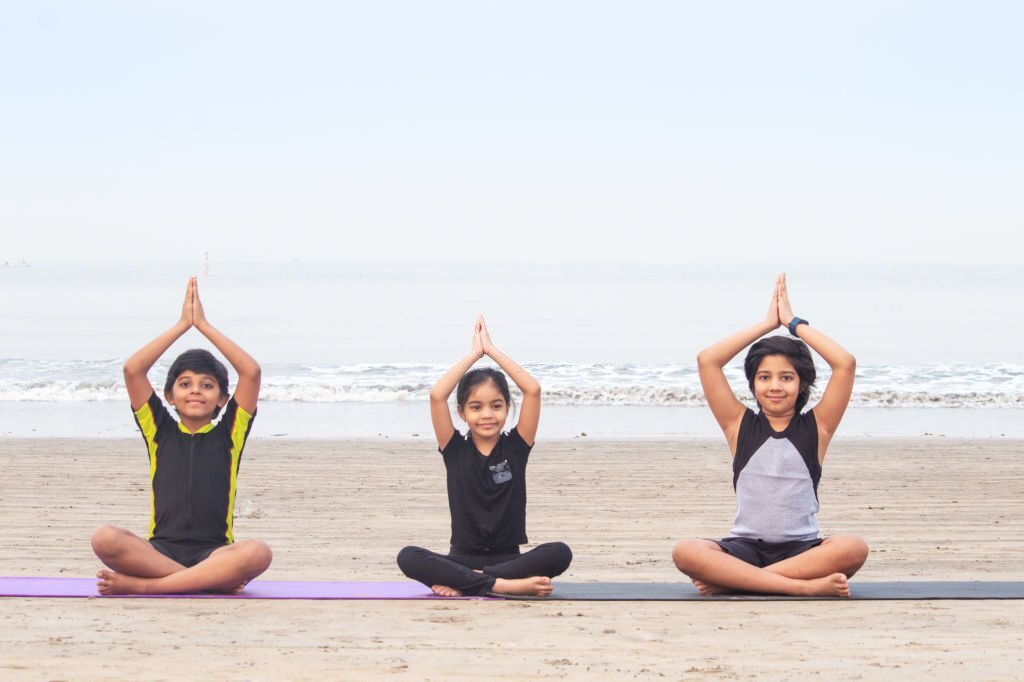To balance a 3 person yoga poses, make sure the people involved are both in the correct positions. In this article, we’ll cover the basic principles behind the three-person balance pose and explain how to do it successfully. The base person should lie on the floor on his or her back, with both arms extended above his or her chest. The second person should sit on the base person’s feet, keeping his or her legs straight.
Tree pose
Tree pose is one of the top 10 4 person yoga poses, and it requires both core strength and balance. You may have seen this pose before, but it is much more difficult than it looks! It requires balance, core strength, and good movement control. It is also challenging for beginners.
The most important thing to remember when practicing Tree is not to fall out. This can be a common mistake made by students. By making this mistake, students often strip the pose of its deeper meaning. This happens because they are so attached to the “perfect” tree that they overcompensate for their first wobble and end up falling out.
Downward-facing dog
Downward-facing dog is one of the most common yoga poses, involving the use of two people’s bodies. Its main benefit is to stretch the lower back and shoulders, and it’s also a good option for back pain relief. However, some people should avoid this pose if they have back or shoulder injuries, or if they are pregnant.
This pose can be difficult and requires good foundation. First, ensure that both legs are at a proper distance apart. Secondly, keep your shoulders away from your ears and thighbones centered. Also, make sure that your feet are flat on the floor. Next, place your hands at shoulder width, and your wrists should be placed slightly in front of your shoulders. Lastly, keep your index fingers pointed straight ahead at 12 o’clock.
L-shape group pose
L-shape group pose for three people is a very challenging yoga asana. This pose requires three people to perform it properly, and it stretches the entire front of the body. You will need at least two people to hold the yoga blocks at each side of the person performing the asana. Then, have one of the people kneel behind the other person, place their hands on the yoga blocks, and lean back until your palms are flat on the ground.
If possible, use a wall. You can stand close to a wall if you know how to hold it. However, if you are too close to the wall, you won’t be able to fully extend your back and make a full forward bend. You can try bending your front leg to help balance yourself. If you’re new to yoga, consider practicing this pose under the guidance of a teacher who can provide you with proper instruction.
Camel pose
Camel pose stretches the front of the body, the chest, and the quadriceps. This posture can help you with back pain and a slouched posture. To get the most out of camel pose, you should properly warm up your body by doing sun salutations. These warm-up exercises engage all major muscle groups in your body and prepare your body for the poses you will be performing.
Camel pose is a great pose for beginners and intermediate students alike. It is easier to learn than other backbends, such as wheel and pigeon, and it’s exhilarating, too. It also teaches back and core stability, enhancing strength and promoting the development of awareness in the pelvis.
Revolved Triangle pose
This pose requires a lot of strength in the core and legs to be able to hold it. It is advisable to keep the heels of each foot in line and avoid pressing the spine inward. If you have back, neck, or hip injuries, you should avoid this pose. It is also not recommended for those who have a high blood pressure or are suffering from diarrhea. If you are unsure about whether this pose is safe for you, it is advisable to seek advice from your doctor.
The Revolved Triangle is a complex pose. There are many variations of it, and some teachers will insist on keeping the hips square, while others will encourage you to shift them slightly. Most practitioners will need a block underneath their bottom hand. The eyes are usually turned upwards, but you may find that looking down is more comfortable and supports your neck.
Chair pose
One of the most challenging poses, Chair Pose requires balance. If you can’t hold a chair, use a table or countertop instead. Make sure to stay focused on your breath, and remember to remain relaxed. This pose stretches the back, hips and periformus muscle.
Lie on your back and bend both knees at about 90 degrees. Make sure that the back of the chair is far enough away from your body to avoid straining your neck and back. Hold this pose for a few breaths and then slowly turn your body toward the back of the chair. Hold the pose for several breaths, and then return to the original position.

